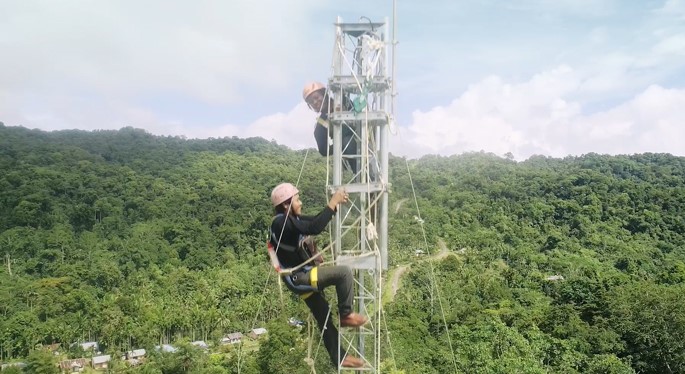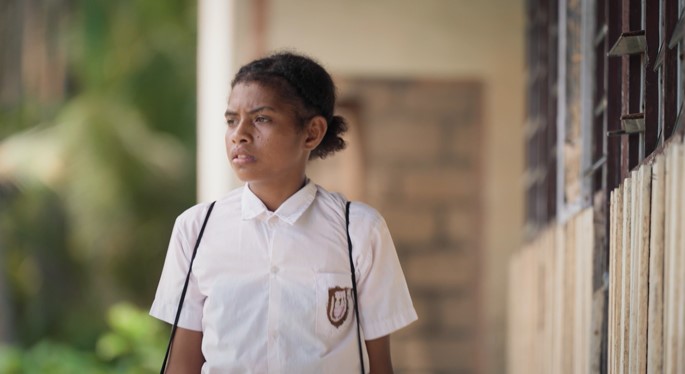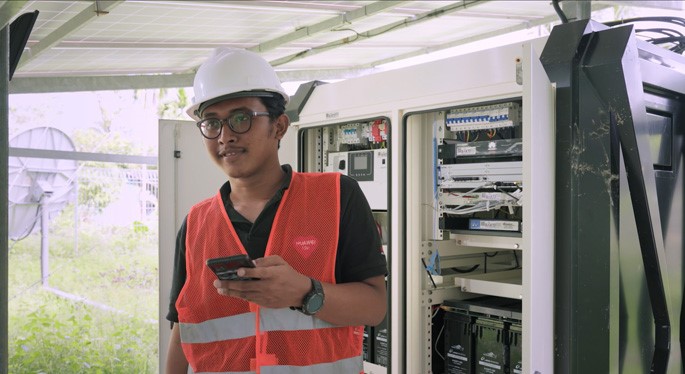Yosephina misses her father. She wants to at least talk to him regularly by phone or video app. But this only happens when there is a good signal. She lives with her aunt on Biak Island in Papua, Indonesia, and wireless coverage was unreliable. The best.
Her father works in the town of Timika, in central Papua. Hoping to reach it, Yosephina and her aunt walked to the end of Biak’s long wooden jetty. Sometimes the calls came through. Other times, when the signal wasn’t stable, the frustration was evident in the teenager’s eyes. Not impressed.
At the end of the pier, and no signal
But the Indonesian government has a national policy to provide connectivity to everyone in Indonesia, a vast archipelago of 17,500 islands. And Huawei, together with its local Indonesian partners, plays a key role in implementing this vision.
Installing a wireless infrastructure in the most remote areas of Indonesia is not an easy task. The islands are often only reached by small boats, on seas that can suddenly become rough. Once on the island, the roads are rough, when not covered in mud puddles. It’s when there are roads. Often, engineers and technicians must walk heavy wireless equipment a few miles to reach a suitable site.

Technicians from Huawei and its local partners must first travel to the site and then climb extremely high towers above the jungle
But children like Yosephina are a great source of motivation for the brave technicians who network the islands. “Yosephina needs internet access because she is about to take her elementary school leaving exams,” says Muhammad Umar Safi’i, a Huawei Indonesia wireless engineer who led the work in Biak. As they set up equipment in remote locations, Safi’i and her teammates often think about the impact of their work. “It pushes us to strengthen our mentality because what we do, we do for the benefit of a lot of people.”
For Huawei and its partners, providing connectivity in Papua is just the first step in a journey that will span many years to come. Because connectivity and economic development are intimately linked. “We don’t want to stop there,” says Roby Yap, managing director of Huawei Tech Investment. “We want to see people grow in this area, using technology provided by Huawei.

Yosephina on her way to school
For now however, the people of Biak are delighted with their 4G. “I love using my phone,” says Yosephina. “I like to search for gospel music, religious videos and study math on the internet; because I like to learn math.
Huawei has developed a wide range of products, technologies and know-how to provide connectivity to the tens of millions of people around the world who are still unconnected. This includes low cost antennas; solar energy, batteries and energy management systems; and a wide range of microwave links that can reach isolated communities.

Huawei engineer Umar Safi’i tests Biak’s first 4G signal
Solutions can be basic and very affordable, or more sophisticated, depending on local needs. Huawei’s highly cost-effective RuralStar solution represents a complete overhaul of base station design. RuralStar is made up of robust but simple telecommunications components. The kit requires so little energy to operate that a few solar panels are enough. More complex “butterfly sites” are installed on taller antenna poles. They can usually provide network coverage on multiple frequency bands and can serve a wider territory due to their height.
Watch Yosephina’s story below. And join us on November 23 for our sustainability event Connectivity+: Innovate for Impact, where you can learn how connectivity is advancing in isolated communities around the world.



